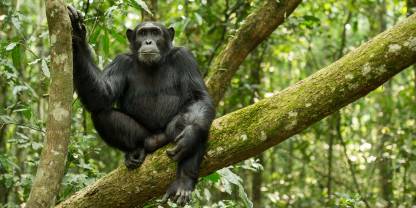Kibale National Park has an alluring checklist of 370-plus species, including four that have yet to be recorded in any other Ugandan national park: Cassin’s spinetail, blue-headed bee-eater, Nahan’s francolin and masked apalis. For first-time visitors hoping to see a good selection of forest birds, walking along the roads is most productive, as they offer good views into the canopy. Serious twitchers looking for forest interior specials, such as green-breasted pitta, will need to head deep into the forest with an experienced local guide. A must for bird-watchers is the community-run Bigodi Wetland Sanctuary, which borders the national park. Migratory birds are present from November to April.
Birding Specials Treats for Avid Birders
(NE) near-endemic = lives in Uganda and neighboring countries- Abyssinian ground thrush
- Afep pigeon
- African grey parrot
- Black bee-eater
- Black-capped apalis
- Black-eared ground thrush
- Blue-breasted kingfisher
- Blue-headed bee-eater
- Blue-headed coucal
- Blue-throated roller
- Brown illadopsis
- Brown-chested alethe
- Cassin’s hawk-eagle
- Cassin’s spinetail
- Crowned eagle
- Double-toothed barbet
- Green-breasted pitta
- Green-headed sunbird
- Little greenbul
- Masked apalis
- Nahan’s francolin (NE)
- Papyrus gonolek
- Purple-breasted sunbird (NE)
- Red-bellied paradise flycatcher
- Red-chested owlet
- Red-faced woodland warbler (NE)
- Red-headed bluebill
- Scaly-breasted illadopsis
- Western nicator
- White-headed wood-hoopoe
- White-naped pigeon
- Yellow-rumped tinkerbird
Best Time for Bird Watching
The birdlife in Kibale is good year-round. From June to September is the main fruiting season, so food is abundant then, and many birds are in breeding plumage. Migratory birds, though not a major factor in the forests, can be found here from November to April. The months from December to February and June to July have the least rain, while March to May and September to November have the most rain. Rainstorms might limit your bird-watching time.

